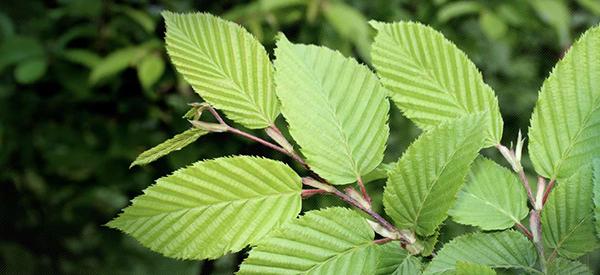
Slippery Elm
Slippery Elm (Ulmus rubra) is a deciduous tree that grows in a cold climate. It is also known as the red elm because of its reddish-brown inner heartwood. But what earns its popular name is the slippery and gooey mucilage found in its inner bark. This substance is used as an ingredient in most lozenges and suppositories. Slippery elm mucilage is also an excellent binder that can hold unleavened bread together. More than its medicinal value, the wood of the slippery elm also makes durable timber. It is used in boats and canoes because it remains strong even after a long time underwater.
The slippery elm tree also provides attractive foliage making them likable trees in parks and gardens. They are an excellent addition to winter and shade gardens, and they can attract butterflies and songbirds. On a separate note, collecting slippery elm barks can eventually kill it. This hounding overharvesting issue enlists it as an endangered tree. Thus, foraging for its bark is regulated and considered illegal in national and protected forests.
The slippery elm graces the forests of North America for many centuries and is a family to American elm. It is used as an herbal remedy for throat and stomach problems. Physicians during the American Revolution have used it as a poultice for gunshot wounds. Early American settlers also chew the slippery inner bark substance for quenching their thirst. The mucilage later gives it its name as a distinction from the American elm.
Where Is Slippery Elm Found?
Slippery elm is abundant in central and southern North America. It spreads over Maine and Florida and is also found in Texas and North Dakota. Some states in the United States and Canada may also grow a lower number of this hardwood. They particularly thrive in temperate forests and cove forests in low mountain regions.
Related: The Complete Map of Edible Plants: Find Out What You Have in Your Area! (Video)
How To Identify Slippery Elm
A medium-sized tree with a long trunk and spreading branches describes the slippery elm. It has a reddish-brown trunk with rough outer bark. But what sets it apart from other elm trees is its slimy inner bark.
- Leaves. This deciduous tree bears green leaves that will turn yellow and gold in the fall. It is oblong-shaped with serrations and is a little uneven at the base. The leaves have a rough texture, owing to the tiny hairs growing on their surface that are stiff at the upper part and pale at the base.
 Flower. Slippery elm flowers bloom from February to around April. The flowers are not showy, appearing in a dense cluster and short stalk. They are greenish-red or rusty-colored, with fuzzy hair but without petals. These flowers bloom before the leaves appear in the tree in early spring.
Flower. Slippery elm flowers bloom from February to around April. The flowers are not showy, appearing in a dense cluster and short stalk. They are greenish-red or rusty-colored, with fuzzy hair but without petals. These flowers bloom before the leaves appear in the tree in early spring.- Roots. The root system of the slippery elm is shallow and spreading. In dry soils, however, it may grow itself a taproot. It may spread in an area ranging from 24 to 60 ft.
- Seeds. The fertile flowers of the slippery elm will give rise to round samaras. A samara is a dry fruit without flesh but with papery wings. Slippery elm samara is single-seeded. The seed is about 12 to 18 mm long, often yellow or cream-colored.
- Stems/Trunks. Slippery elm trunks are rough, with their bark lined with deep furrows. The outer bark can be gray, dark brown, or reddish-brown, while the inner bark is rust-red colored. It oozes a clear, viscous, and gelatinous mucilage with a pleasant and fragrant smell.
Slippery elm has no known cultivars, but it was hybridized. In the early 20th century, the slippery elm (Ulmus rubra) was hybridized with the Siberian elm (Ulmus pumila) in the wild. As a hybrid parent, slippery elm produces limited cultivars. The most successful hybrid cultivars were Lincoln, Coolshade, Fremont Rosehill, and Improved Coolshade.
Related: Plant Identification Guide – 400 Wild Plants That You Can Forage For (Video)
How To Grow Slippery Elm
Slippery elm is an endangered tree, and though it is a beautiful ornamental, it is hard to find commercially. Some shade and natural gardens may still grow these trees, but they thrive mostly in the wilds.
Propagating a slippery elm is possible through seeds. A cut-down tree stump will also grow new sprouts and eventually a new tree when left alone. They are easy to grow, hardy and tolerant, and may live for up to 300 years. They often fare up well in USDA hardiness zones 3 to 9. If you want to grow it in your yard, you will need ample space to accommodate its spreading roots in at least 24 ft.
Growing Slippery Elm from Seeds
Ripe slippery elm samaras that have fallen off are ideal for planting. Do not bother with removing the wings to avoid damaging the seeds. Airdry the seeds and stratify them at 41°F (5°C) for about 60 to 90 days before planting.
You may sow the seeds in a large container or directly into your garden. Once the plant has established itself and under favorable conditions, it should grow at about 3 ft per year.
Related: 10 Plants That You Should Never Plant Together (Video)
Slippery Elm Plant Care
The slippery elm seedlings are hardy and tolerant to weather conditions. But they will grow best in the following cultural conditions:
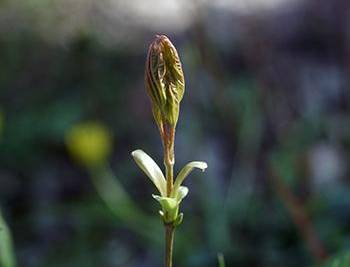
- Clay-loam soil
- Soil pH level 6 to 8
- Well-draining, moist, or occasionally dry soil
- Full sun and partial shade
The problem with growing a slippery elm tree is that it is prone to Dutch elm disease. It is a kind of fungal disease in the bark spread by the bark beetles.
They are not as susceptible to the disease as the American elm, but infestation may still lead to plant death.
Prevention of the Dutch elm disease in elm trees includes proper pruning and watering. Accordingly, watering the plants from April to around mid-August will help. By mid-August, you should stop watering and allow only a couple more soaking before winter. It will allow the tree to harden up and prevent bugs from hosting in its trunk.
How To Harvest Slippery Elm
The inner bark is the most essential part of the slippery elm tree. Harvesting it means scraping off a sliver of its bark. Eventually, though, this process will also mean the imminent demise of the tree. The best way of harvesting tree bark is from its lower pruned branch and not from its trunk. It does not only apply to the slippery elm, but all trees foraged for their barks.
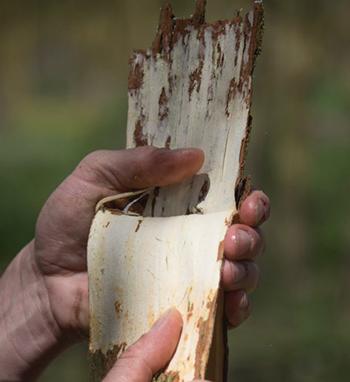
According to The Herbal Academy, the ideal way of foraging for bark is from naturally fallen trees within a few weeks after it fell. It can be tricky and a little less hopeful, but it is an ethical and sustainable way of bark harvesting.
The next best way is finding a small and low branch for a sliver of its bark. Slice a knife deep down into its wood, and the bark will come off easily. Once stripped off, separate the inner bark from the outer one. You can harvest the sap or dry the inner bark for later use or if you plan to grind it into powder.
Harvest of slippery elm bark is best done in spring and early summer. It is the season when the sap production is at its peak that it flows out of the bark easily.
What Slippery Elm Is Good For And Natural Remedies Made From It
Ulmus rubra is an excellent herb for treating colds and other respiratory symptoms. It has an effective action against asthma and is used for the fast healing of wounds and ulcers. Slippery elm is often used in lozenges that help in alleviating sore throat.
Traditionally, the slippery elm was used as a thirst quencher for the early American settlers. Its powdered bark is sometimes made into a nourishing gruel or porridge for sick and weakened patients. According to medicinal folklore, a gruel of slippery elm can heal broken bones faster. It is also an excellent antacid that can relieve GERD and heartburn and treat many digestive issues.
Slippery elm helps stimulate the nerve endings to increase their mucus production. Its slippery gel and the increased mucus coat the mouth, throat, and stomach alleviating any inflammation. This action also protects the gastrointestinal tract from ulcers and hyperacidity.
Slippery elm is also known for improving bowel movement. Thus, it is suggested as a cure for IBS (irritable bowel syndrome) and ulcerative colitis. It is also an ingredient used in the making of suppositories.
Related: Fertilize Your Gut? You Bet! Here’s How (Learn More)
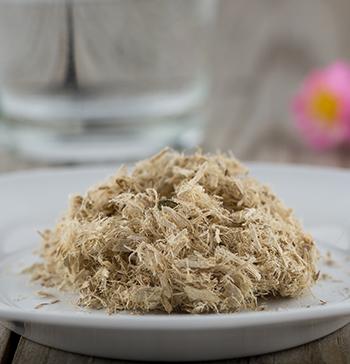
There is little research evidence to back some of its medicinal properties. But the slippery elm is considered an effective herbal remedy for conditions like:
- Abscesses, boils, wounds, ulcers
- Asthma, laryngitis, sore throat, cough
- GERD (Gastroesophageal reflux disease)
- Constipation, irritable bowel syndrome
- Digestive problems
- Other respiratory problems
- Smoking addiction
What Parts Of The Slippery Elm Is Used For Remedies?
The mucilaginous inner bark is the most valuable part of the slippery elm used for remedies. Its leaves, flowers, and roots also make an important part in making infusions and decoctions. The inner bark that is harvested is sold either in its dried or powdered form.
Finely grounded slippery elm bark is good for tea and extracts preparations. Meanwhile, the coarsely powdered bark is ideal for use as a poultice. Today, slippery elm is marketed as a tablet, capsule, lozenge, or extract. Some manufacturers may add the slippery elm as an ingredient of nutrition drinks and some baby foods.
Related: My #1 Go-To Herb for Avoiding Influenza, Colds, and Severe Respiratory Illness (Learn More)
Slippery Elm Cough Drops
What you will need:
- Medium-sized mixing bowl
- Wax paper
- Tray or baking sheet
Ingredients:
- 1 cup slippery elm bark, finely ground
- 1 tsp ground cinnamon
- 4 to 6 tbsp honey, as a binder
Steps:
- Warm the honey in a syrup consistency.

- In a bowl, mix slippery elm powder, cinnamon and honey to form a dough. You can add a little more honey if the mixture is too dry.

- Line the tray with wax paper. Take a small portion of the slippery elm mixture and form it into small balls. Gently lay the slippery elm balls on the tray.

- Leave the balls to dry for about 24 hours or longer if in a damp climate. Cover, if needed.

- Cut wax paper into squares. Wrap the slippery elm cough drops with it.

- Store them in an airtight container or an airtight bag. Label with the date.

How To Use This Remedy:
These slippery elm cough drops will last for approximately three weeks in the container. You can take one cough drop at least three times a day with a dosage not exceeding 3 tbsp in a day. The combination of slippery elm, honey, and cinnamon is perfect for treating sore throat and cough.
What Plants Resemble Slippery Elm
| Feature | Slippery Elm (Ulmus rubra) | Beech Tree (Fagus grandifolia) | White Birch (Betula papyrifera) |
|---|---|---|---|
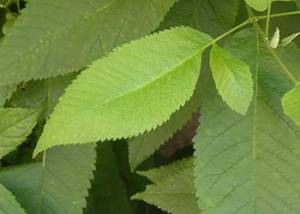 | 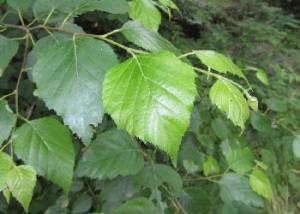 | 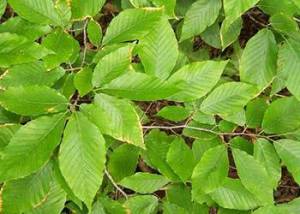 |
|
| Size | Up to 70 ft high; 2 to 3 ft in diameter | 60 to 80 ft tall; 2 to 3 ft in diameter | 50 to 70 ft tall; up to 2.5 ft in diameter |
| Leaves | Oblong; double-serrated; alternate; green to gold; hairy | Oblong; serrated; green//brown/gold; alternate; hairy; glossy | Oval; double serrated; green; smooth; hairy |
| Flowers | Green to red/ burgundy; dense cluster with short stalk; fuzzy | Green to white; male flowers in a globular cluster; female flowers in short spike | Green/brown, copper; greenish female flowers; long and brownish male flower |
| Stem/Trunk | Gray or brown; with shallow furrows and flat ridges; downy twigs | Thin and smooth gray bark | White, flaky bark; with black marks; |
| Scent | Sweet, maple syrup-like smell | No characteristic odor | Clean and sweet pine-scent |
Warnings And Cautions
Slippery elm may not be safe in pregnant and breastfeeding women and should be avoided for safety. Traditionally, it is an abortifacient, which can cause miscarriage and preterm birth. However, it is unclear whether the cause is in administering slippery elm vaginally, or orally.
The slippery elm is safe for children, but a health practitioner’s advice is needed for the dosage and administration of slippery elm supplements. Adults, especially those taking maintenance medicines for various conditions should also contact their health service provider. This herb may interfere with the absorption of some drugs and herbs.
When taking any supplements, even natural herbs, it is best to talk to your doctor. They can tell the possible interaction with your current medication or their potential side effects. Slippery elm does not have adverse side effects but it can cause allergies to people with product sensitivities.
You may also like:
Herbal Mixture for Chronic Cough
Add This “Unusual Nutrient” to Coffee or Tea, to Effortlessly and Fully Empty Your Bowels Every Single Morning (Learn More)
How to Grow, Harvest and Use Agrimony for Digestive Problems
My #1 Go-To Herb for Avoiding Influenza, Colds, and Severe Respiratory Illness

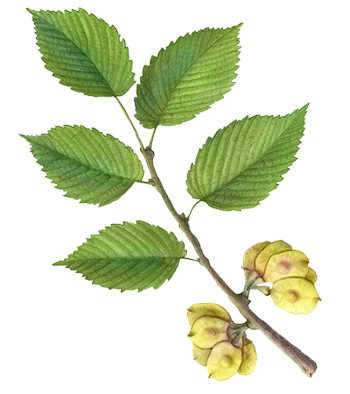 Flower. Slippery elm flowers bloom from February to around April. The flowers are not showy, appearing in a dense cluster and short stalk. They are greenish-red or rusty-colored, with fuzzy hair but without petals. These flowers bloom before the leaves appear in the tree in early spring.
Flower. Slippery elm flowers bloom from February to around April. The flowers are not showy, appearing in a dense cluster and short stalk. They are greenish-red or rusty-colored, with fuzzy hair but without petals. These flowers bloom before the leaves appear in the tree in early spring.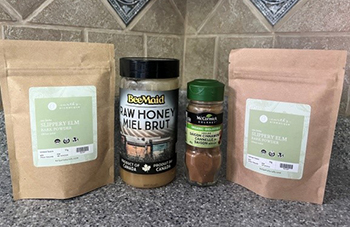

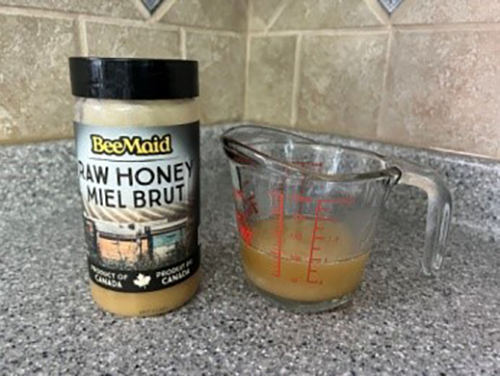
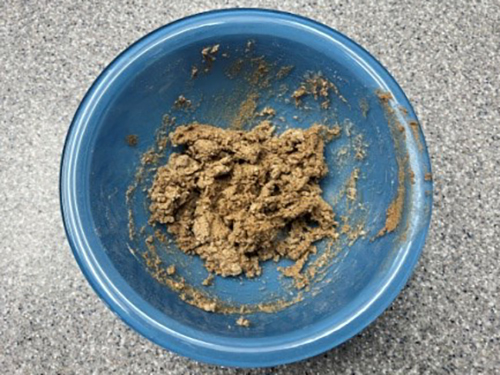
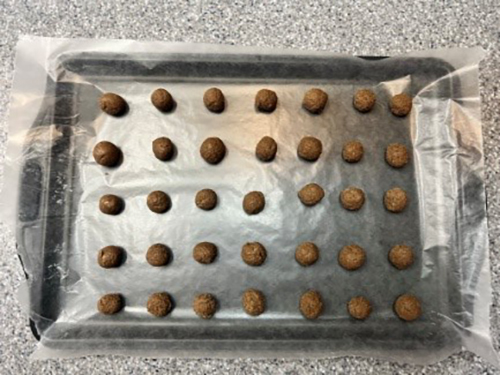
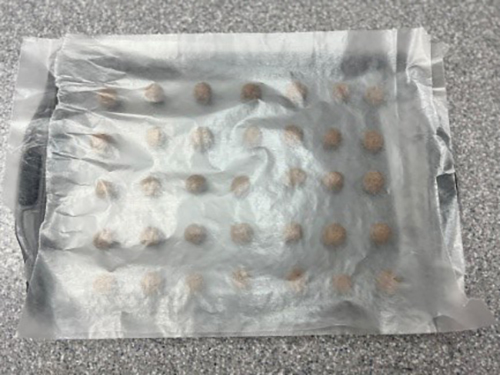
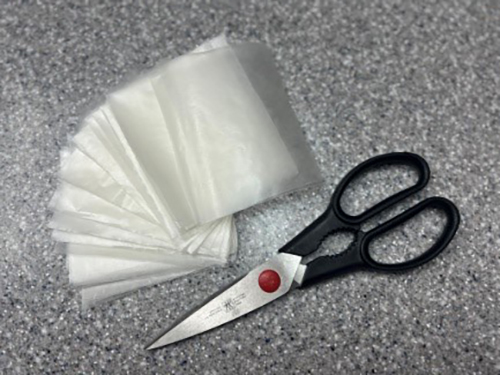
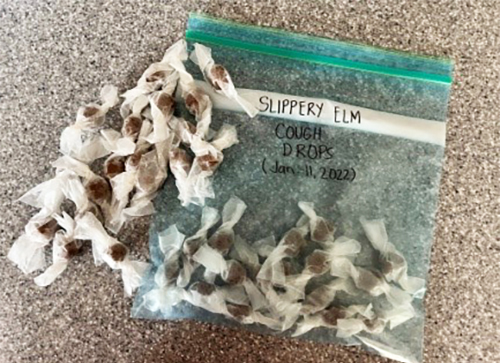
There is no mention of the use of tree sap. Is there no value to it?
Organic Slippery Elm Bark Powder
https://amzn.to/3pXhNuK
Ground Cinnamon
https://amzn.to/35JwgU9
Pure, Raw & Unfiltered Honey
https://amzn.to/3CA05lM
Wax Paper Sheets
https://amzn.to/3J4or9O
Resealable Clear Silver Mylar Bags
https://amzn.to/37nZFDM
Thank you this information was very educating. I now intend to plant as many as I can. Just need seeds or saplings. D.Marshall3/22
Lol. Here ya go my friend!
Slippery Elm seeds to plant
https://amzn.to/36hEfYb
Thank you so much. This is so timely as my S. Elm is blooming now. I’m needing to prune some rather large limbs. This is perfect timing. I wasn’t sure how to harvest it or prepare it until now.
When my pooch has an upset stomach he’s out munching elm leaves. Especially small newer ones. Animal can tell us a lot about nature.
I use this for stomach issues, and also for my dog who has nausea from kidney disease. It really helps her and no side effects. We had tried the conventional medication for nausea and she had bad side effects from it. I’d rather stick to natural herbs and remedies now.